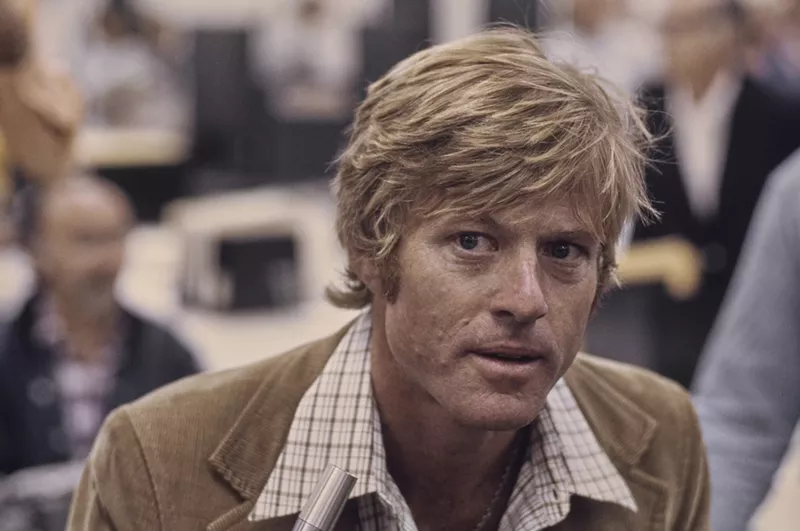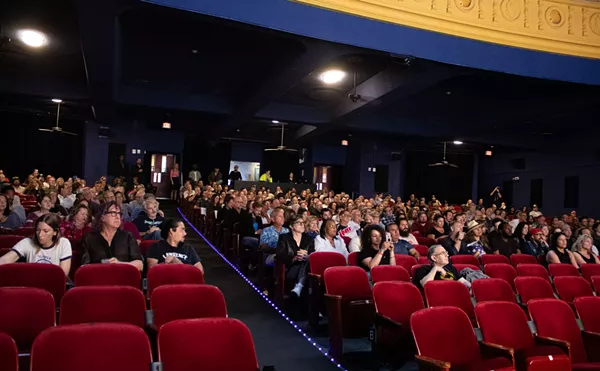Film icon Robert Redford died on Sept. 16 at the age of 89, according to a statement from his publicist.
Redford was not only one of the most beloved movie stars of all time, but one of the few titans of Hollywood who used his fame and accolades for the force of good. Although he first became known as the swashbuckling co-star to Paul Newman in Butch Cassidy and the Sundance Kid, Redford starred in a number of quintessential films during the 1970s that questioned the integrity of America’s institutions. Films like The Sting, Three Days of the Condor, The Candidate, Jeremiah Johnson and All the President’s Men are a testament to such a legacy.
His integrity translated behind the lens, as well. As a director, Redford chose to give up-and-coming actors an opportunity to break out instead of spotlighting himself — his first feature, Ordinary People, became one of the few directorial debuts to win the Academy Award for Best Picture.
Redford's place among pop culture extended long beyond the apex of his career through his fervent activism both within and outside the film industry. As the creator of the Sundance Film Festival, Redford gave a platform to countless independent filmmakers to share their work and have their voices heard. As a political maverick, Redford advocated for environmentalism, LGBTQ allyship, Native American rights and biodiversity long before Hollywood became more outspoken on modern issues. Such an immense legacy meant that Redford’s last starring role would have great significance and would be met with tremendous expectations.
While it may have seemed unusual for Redford to select a tiny, Dallas-set caper comedy as his last major screen appearance, The Old Man & The Gun became one of the most defining roles of his career.
Although Redford had retired from directing after the underrated political thriller The Company You Keep debuted in the fall of 2013, he found a surprising new act in his career by appearing in more commercial films aimed at younger audiences. He may have found time to make personal projects like the romantic drama Our Souls at Night and the survival adventure All is Lost, but a majority of audiences born within this century may recognize him most as the villainous Alexander Pierce in Captain America: The Winter Soldier or the kindly woodsman Conrad Meachum in the remake of Pete’s Dragon. It was in the aforementioned family fantasy film that Redford first worked with writer/director David Lowery, a Dallas resident who had made a name for himself with his profound, atmospheric Texas indies.
Pete’s Dragon was the rare Disney live-action remake that offered more than empty nostalgia, as Redford was able to use the film’s fantasy components to pay homage to his longstanding history of advocating for animal rights. However, Pete’s Dragon was a rare commercial venture for both Redford and Lowery, both of whom had cut their teeth making low-budget films on a small scale. Lowery’s breakout came when his seminal feature, Ain’t Them Bodies Saints, debuted at Sundance in 2013. Perhaps as an extended way of showing his gratitude, Lowery cast Redford as the lead in a good-spirited caper based on a bizarre true story titled The Old Man & The Gun.
The film was inspired by Forest Tucker, a career criminal who traveled between banks throughout the country before his death in 2004 in Fort Worth. Known as the “gentleman bank robber,” Tucker was known for kindly relieving banks of their cash savings, never raising his voice and often flirting with the teller before he eluded the police. The only thing more baffling than Tucker’s demeanor was the length of his career, as it wasn’t until the age of 79 that he was captured by the police.
The whimsical, inherently charismatic personality of Tucker made him feel like a larger-than-life character, and one not all that different from Redford’s breakout role as “The Sundance Kid.” The Old Man & The Gun offered Redford the ability to take advantage of the goodwill he earned from audiences, as playing Tucker felt like a spiritual continuation of the heist thrillers he starred in during the earliest days of his career. Although giving Redford the opportunity to go out on a high note was always going to be admirable, Lowery crafted a much deeper, more moving film with The Old Man & The Gun, which examined the legacy of a man defined by his resistance to authority.
Redford’s tender, yet strong-willed conviction had always been one of his most defining traits on screen. Although he made headlines for going against the mainstream to make more personal projects, Redford would later be remembered for the opportunities he created for women and people of color. While The Old Man & The Gun doesn’t make it entirely clear what Tucker stands for, he faces similar scrutiny as Redford, leading him to always be on the run.
Shot in Fort Worth, Bellhead and Waco, The Old Man & The Gun was promoted as being “authentically Texan” by Lowery, who had recently returned to the Lone Star State to film A Ghost Story (which, ironically enough, also debuted at Sundance). The real Tucker may have been born in Miami, but based on the bliss he found in Dallas-Fort Worth during the end of his life, he earned the right to be called a “true Texan.” By the end of The Old Man & The Gun, it feels like Redford earned the same distinction — what’s more Texan than sharing a burger on a first date, and leading the police down a chase on Central Expressway?
North Texas may have been a strange place for Tucker to settle down, but Lowery's directorial vision exemplified the city’s architecture, culture and people with a gorgeous recreation of the 1970s. Although the character finds a surprisingly friendly rivalry with Dallas Police Detective John Hurt (Casey Affleck), it's a late-blooming romance with a widow named Jewel (Sissy Spacek) that convinces Tucker that there’s more to life than the next con.
The Old Man & The Gun was as fitting a final showcase as any fan of Redford’s could have asked for, even if he did technically make a small cameo in Avengers: Endgame, reprising the role of Pierce.
Although archival footage of Redford’s older films was used to insert flashbacks of Tucker’s younger years, The Old Man & The Gun proved that “The Sundance Kid” hadn’t lost his edge. Fortunately, the film lives on as a piece of classical storytelling that became Lowery’s most heartwarming attribute to Dallas and served as a thoughtful calling card for the finale of Redford's career as an actor.

Audio By Carbonatix
[
{
"name": "GPT - Billboard - Slot Inline - Content - Labeled - No Desktop",
"component": "21721571",
"insertPoint": "2",
"requiredCountToDisplay": "2"
},{
"name": "STN Player - Float - Mobile Only ",
"component": "21861991",
"insertPoint": "2",
"requiredCountToDisplay": "2"
},{
"name": "Editor Picks",
"component": "17105533",
"insertPoint": "4",
"requiredCountToDisplay": "1"
},{
"name": "Inline Links",
"component": "18349797",
"insertPoint": "8th",
"startingPoint": 8,
"requiredCountToDisplay": "7",
"maxInsertions": 25
},{
"name": "GPT - 2x Rectangles Desktop, Tower on Mobile - Labeled",
"component": "22608066",
"insertPoint": "8th",
"startingPoint": 8,
"requiredCountToDisplay": "7",
"maxInsertions": 25
},{
"name": "Inline Links",
"component": "18349797",
"insertPoint": "8th",
"startingPoint": 12,
"requiredCountToDisplay": "11",
"maxInsertions": 25
},{
"name": "GPT - Leaderboard to Tower - Slot Auto-select - Labeled",
"component": "17357520",
"insertPoint": "8th",
"startingPoint": 12,
"requiredCountToDisplay": "11",
"maxInsertions": 25
}
]












